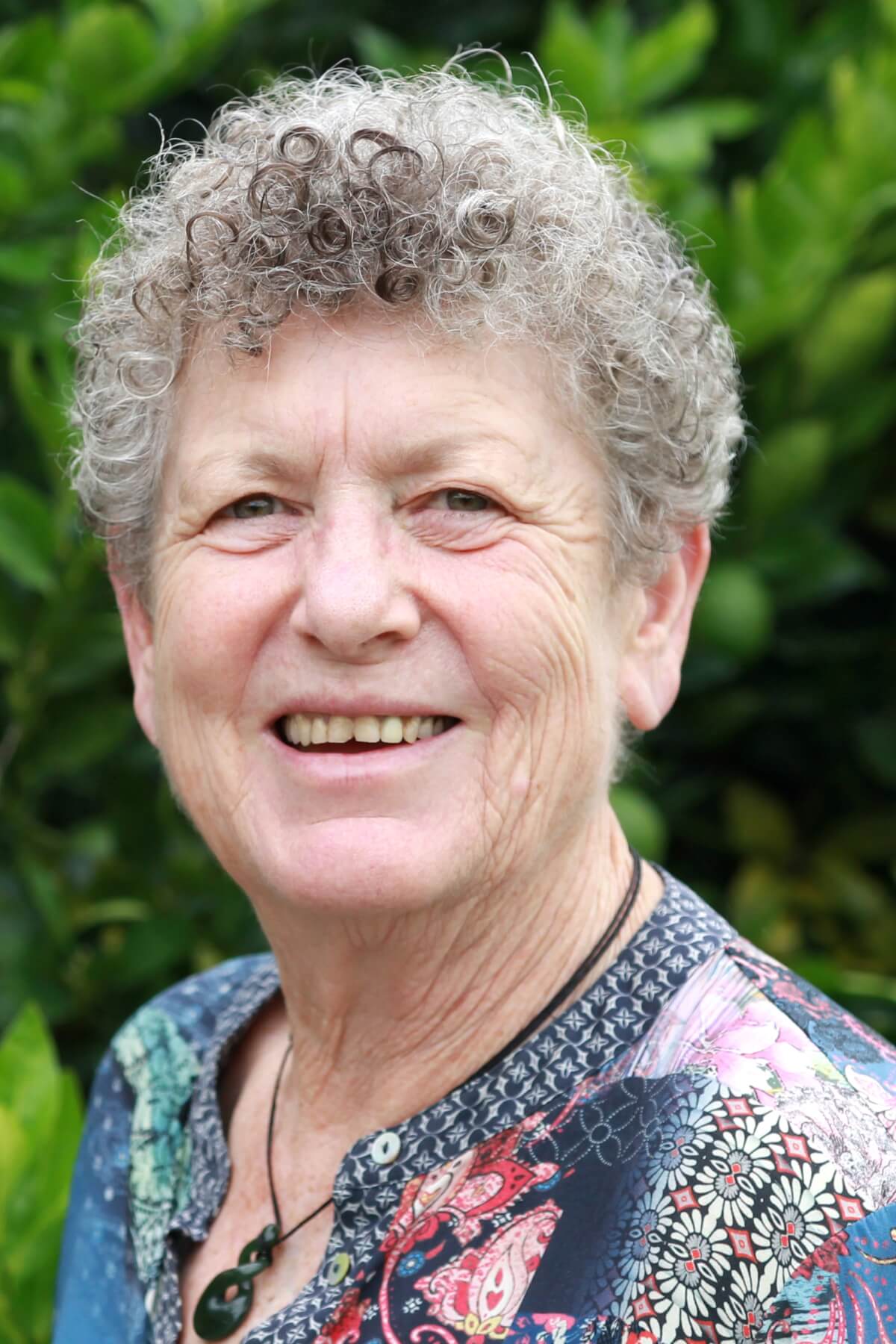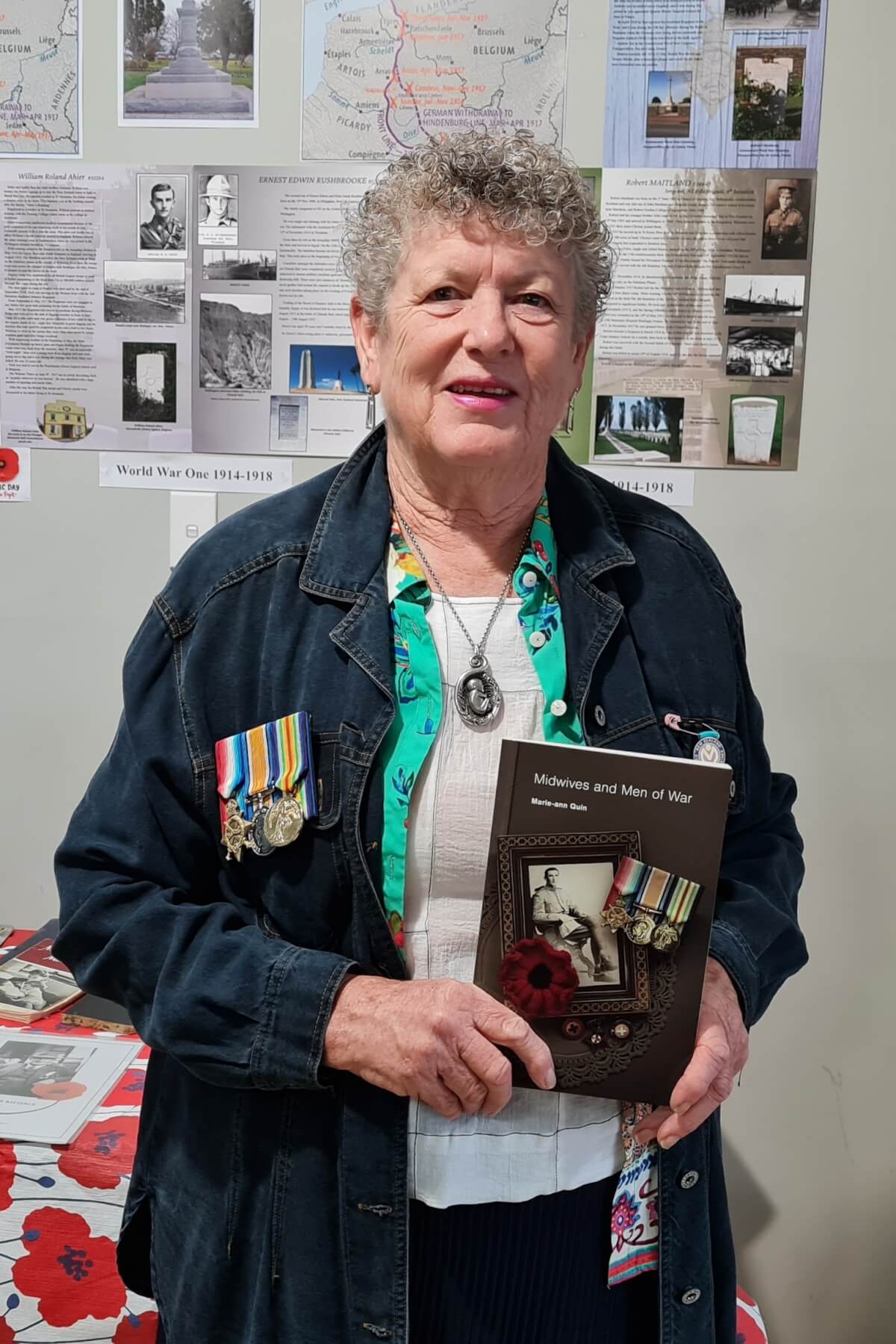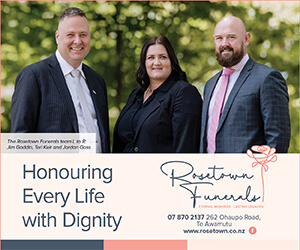Marie-ann Quin delivered more than 1200 babies in Waipā and King Country in the 25 years before she retired two years ago.

Marie-ann Quin with daughter Kat at her book launch at Te Awamutu RSA. Photo: Supplied.
She covered thousands of kilometres in that time travelling to Te Awamutu, Cambridge, Kāwhia, Te Miro, Horahora, Arapuni, Arohena, Ōtorohanga and all the remote communities in between.
Quin, 68, who lives in Te Kawa between Ōtorohanga and Te Awamutu, launched her second novel Midwives and Men of War at the Te Awamutu RSA last week. It is the second in a trilogy spanning midwifery from the time settlers came to New Zealand in the 1840s to the present day.
The first Emerald to Pounamu: A Midwife’s Odyssey sold well and had to be reprinted two weeks after its launch.
She gave an author’s talk and signed copies of the book to midwives, nurses, friends, relatives and patrons at a venue she described as appropriate as the love interest is a WW1 Gallipoli soldier.
Quin trained, worked and practised as a registered nurse at Waikato Hospital and then did her Plunket training when her children were little.
She covered the rural areas around Waipā while Nola Berney looked after Te Awamutu town.
“I had to work as there was a huge dairy downturn in the 80s and it was the only way to keep our heads above water. Most of the families I was caring for were in the same boat so I could really relate to their stresses and support them in the most compassionate way,” she told The News.
In 1990, she did her midwifery training and set up as an independent midwife including shifts at Matariki Maternity.
“The doctors already knew me from Plunket, so they were very supportive and we worked alongside each other to give the women, their babies and their families the best possible care,” said Quin.
Two years ago, she retired, burnt out by the demanding and unsustainable caseload caused by too few midwives.
At one point she was travelling up to 1000kms a week to see families.
She had been unable to work for several years but navigated her way back to good health, picking up casual work at Matariki, and then Te Awamutu Birthing.
A highlight in recent times was when she became a rural and remote rural locum travelling around New Zealand giving rural midwives a holiday break, which the government partly funded.
Before her retirement she was working casual 12 hour shifts at Tokoroa Birthing Unit.
“Covid meant that I was unable to reduce my hours, as the mandate took many of our midwives out of employment and I ended up doing four 12 hour shifts, not the best way to ease into retirement.”

Marie-ann Quin with nursing friend Lynne Forsman who she started her hospital training with in 1973.
That experience she put into her first book and filled a void when she “finally and reluctantly left the career that I adored.”
Her daughter Kat Quin, who writes and illustrates the Kuwi the Kiwi and Flit the Fantail series helped design the book covers, set up a website and be a self-publishing mentor.
Another daughter Esther Harcourt, who lives in Wellington and who has a doctorate in English and German literature, gave some brutal, but necessary guidance with editing before Quin sent her manuscript to a professional editor.
Family history gave her ideas for the by-stories of other characters, especially the love interests. Her grandfather Hubert Matson fought at Gallipoli.
The novel follows Louise, who is studying to become a midwife, while her mother and grandmother, from the first novel remain Class B midwives.
They can now only practice under the supervision of a doctor or a formally trained midwife. The hierarchical system challenges the practice of these women, who Louise has grown up with and admired for their skills and wisdom.
Quin has a busy life with her husband Pat, three daughters and 11 grandchildren, but she took some advice from Stephen King’s autobiography About Writing, to be self-disciplined and sit down every day to write 2000 words.
She is travelling to Hanmer Springs for Anzac Day next week where she will wear her grandfather’s medals and attend the re-opening of the newly renovated Queen Mary Soldiers Rehabilitation Hospital where some of the latest novel is set.













